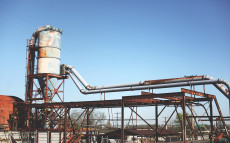- pathfindersAI
- Job Profile
Patternmakers, Wood
Summary
Career Description: Patternmakers, Wood
What They Do
Patternmakers, Wood, are skilled artisans who specialize in crafting precise wooden patterns and templates used in manufacturing processes. These patterns serve as models for forming molds and casts in metal foundries and other production facilities. Their work plays a crucial role in the production of a wide array of industrial and consumer products, ranging from automotive parts to intricate machinery components. By transforming intricate design blueprints into tangible wooden forms, Patternmakers, Wood, ensure that the products made from these molds meet exact specifications and high-quality standards.
Job Responsibilities
The responsibilities of Patternmakers, Wood, encompass various stages of the pattern-making process, each requiring meticulous attention to detail. Initially, they interpret technical drawings and blueprints, an essential step requiring a deep understanding of manufacturing requirements. They then select appropriate materials and utilize hand tools, woodworking machinery, and computer-aided design (CAD) software to shape and assemble intricate wooden patterns.
Patternmakers are also responsible for inspecting and testing their patterns to ensure accuracy, making necessary adjustments to meet precise tolerances. They work closely with engineers and other manufacturing professionals to troubleshoot design issues and implement improvements. Additionally, maintaining and repairing existing patterns is a significant aspect of the job, ensuring the longevity and functionality of manufacturing molds and dies.
Essential Skills
Success as a Patternmaker, Wood, demands a blend of technical, analytical, and creative skills. Proficiency in woodworking techniques and familiarity with a variety of tools and machinery form the foundation of this career. Attention to detail is paramount, as even minor inaccuracies can result in flawed molds and costly production errors.
Moreover, strong visualization skills enable Patternmakers to understand and transform 2D blueprints into 3D objects. Analytical thinking and problem-solving abilities are crucial when interpreting complex designs and addressing any issues that arise during the pattern-making process. Additionally, effective communication skills are necessary to collaborate with team members and convey technical information clearly.
Educational Pathways
The journey to becoming a proficient Patternmaker, Wood, typically begins with a high school diploma or equivalent, although further education greatly enhances career prospects. Many aspiring patternmakers pursue vocational training or associate degree programs in woodworking, manufacturing, or a related field. These programs often include coursework in technical drawing, materials science, and machining techniques, providing a well-rounded foundation for the profession.
Apprenticeships are also a common pathway, combining on-the-job training with classroom instruction. Through these programs, apprentices gain hands-on experience under the mentorship of seasoned patternmakers, gradually developing the skills and knowledge needed to excel in the field. Continuous education through workshops, certifications, and courses in advanced manufacturing technologies such as CAD software further boosts a patternmaker’s capabilities and employability.
Career Prospects
The demand for skilled Patternmakers, Wood, remains stable, driven by the ongoing need for precise manufacturing molds in various industries. While advancements in digital manufacturing technologies and 3D printing offer new tools and methods, traditional pattern-making skills continue to be highly valued. Experienced patternmakers may advance to supervisory or managerial roles, overseeing pattern-making departments and leading teams of technicians.
Moreover, the specialized skill set of patternmakers opens doors to opportunities in related fields such as mold making, tool and die making, and model making. The transferable skills gained can also lead to roles in quality control, technical design, and manufacturing engineering, broadening career prospects and potential for professional growth.
Conclusion
Patternmakers, Wood, are essential contributors to the manufacturing industry, creating the precise patterns that form the backbone of production processes. Their role requires a unique blend of technical skills, meticulous attention to detail, and the ability to transform complex designs into functional models. With a solid educational foundation and continuous skill development, patternmakers can expect stable career prospects and opportunities for advancement. This profession not only sustains traditional craftsmanship but also adapts to modern technological advances, ensuring its enduring relevance in the manufacturing landscape.
Video
Compensation
Similar Occupations
In this area you will find other occupations that are close to the one you were viewing in tasks, knowledge and work environment. If the primary job profile you are viewing isn't quite to your liking, take a look around and see what else is available.
Basic and Premium Accounts have more alternative occupations available than the Free account.

Cabinetmakers and Bench Carpenters - 51-7011.00
Cabinetmakers and bench carpenters specialize in constructing and repairing wooden cabinets, furniture, and fixtures, often working from detailed blueprints and specifications. They use a range of hand tools and machinery to cut, shape, and assemble wood products to precise measurements and high-quality standards.
-
$43,260/yr
Median Pay -
88,460
Number of Jobs

Fabric and Apparel Patternmakers - 51-6092.00
Fabric and Apparel Patternmakers create templates for the construction of clothing and other textile products, ensuring precise measurements, shapes, and styles align with design specifications. They transform designers' concepts into detailed pattern pieces that guide the cutting and assembly process in garment manufacturing.
-
$62,510/yr
Median Pay -
2,670
Number of Jobs